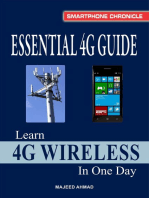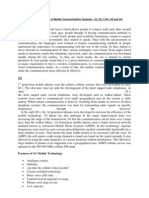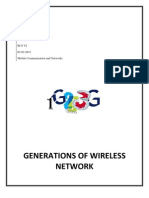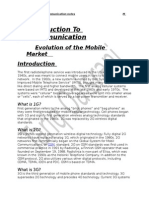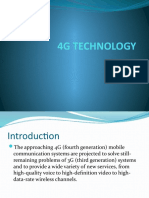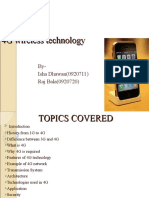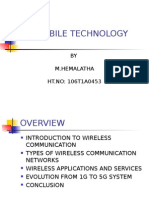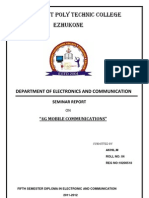0 ratings0% found this document useful (0 votes)
Lecture 1 (Eee508)
Lecture 1 (Eee508)
Uploaded by
Olakunle SodunkeCopyright:
© All Rights Reserved
Available Formats
Download as DOCX, PDF, TXT or read online from Scribd
Download as docx, pdf, or txt
Lecture 1 (Eee508)
Lecture 1 (Eee508)
Uploaded by
Olakunle Sodunke0 ratings0% found this document useful (0 votes)
Original Title
Lecture 1(Eee508)
Copyright
© © All Rights Reserved
Available Formats
DOCX, PDF, TXT or read online from Scribd
Share this document
Did you find this document useful?
Is this content inappropriate?
Copyright:
© All Rights Reserved
Available Formats
Download as DOCX, PDF, TXT or read online from Scribd
Download as docx, pdf, or txt
0 ratings0% found this document useful (0 votes)
Lecture 1 (Eee508)
Lecture 1 (Eee508)
Uploaded by
Olakunle SodunkeCopyright:
© All Rights Reserved
Available Formats
Download as DOCX, PDF, TXT or read online from Scribd
Download as docx, pdf, or txt
You are on page 1/ 3
LECTURE 1(EEE 508)
OVERVIEW OF CELLULAR NETWORKS
According to Singh et al. (2012 )Wireless mobile communication networks have
experienced four generations of change. First Generation (1G) mobile phone networks
were the earliest cellular systems, and they relied on a network of distributed transceivers
to communicate with the mobile phones. Second Generation (2G) mobile telephone
networks were the logical next stage in the development of wireless systems after 1G,
and they introduced for the first time a mobile phone system that used purely digital
technology. Third Generation (3G) mobile telephone networks are the latest stage in the
development of wireless communications technology. Significant features of 3G systems
are that they support much higher data transmission rates and offer increased capacity,
which makes them suitable for high-speed data applications as well as for the traditional
voice calls. Fourth Generation (4G) is known as beyond 3G, stands as an acronym for
Fourth-Generation Communications System. It is used to describe the next step in
wireless communications. A 4G system will be able to provide a comprehensive IP
solution where voice, data and streamed multimedia can be given to userson an anytime,
anywhere basis, and at higher data rates than previous generations.
First Generation Networks (1G)
According to Chenet al. (2007) First Generation phones were analog, used for
voice calls only, and their signals were transmitted by the method of frequency
modulation. These systems typically allocated one 25 MHz frequency band for the
signals to be sent from the cell base station to the handset, and a second different 25 MHz
band for signals being returned from the handset to the base station. The first generation
wireless mobile communication system is not digital technology, but analog cellular
telephone system which was used for voice service only during the early 1980s. This
Advanced Mobile Phone System (AMPS) was a frequency modulated analog mobile
radio system using Frequency Division Multiple Access (FDMA) with 30kHz channels
occupying the 824MHz − 894MHz frequency band and a first commercial cellular system
deployed until the early 1990’s.
According to Yanget al. (2007) there are such limitations in the 1G mobile
communications. First of all, it has no data service that can convert the voice into digital
numbers. Secondly, the global roaming service was not available. Also, it contains an
analog system in such a way that only voice is carried by these systems. As a matter of
fact, the main problem that was held in the 1G is that there was only one channel which
carries the data from one caller (source) to another (destination). More clearly, the
available radio spectrum was not efficient for the space of channels. In other words, the
first caller (source) will have to wait for a response from the other caller once the voice is
received. This means that the two callers are not able to hear each other simultaneously
since the number of calls was limited by this effect. Consequently, such calls can be only
performed once. This process is called “Frequency Division Multiple Access” FDMA.
This problem could be solved by having more than one channel (two channels or more)
where one channel will have to be involved in carrying the voice and the other channel
will have to be involved in carrying the data of the voice. Consequently, adigital system
is required for such tasks. More specifically, thefrequency modulation method was used
to transmit the signalsof these voice calls.
Second Generation Networks (2G)
According to Tudzarov et al.(2011)2G used digital signals for voice transmission
and had a speed up to 64 kbps. It also provided the facility of Short Message Service and
used the bandwidth range of 30 - 200 KHz. 2G comprised of the following Mobile
technologies: General Packet Radio Service (GPRS), Code Division Multiple Access
(CDMA), Global System for Mobile Communication (GSM) and Enhanced Data Rates
for GSM Evolution (EDGE). Some key benefits of 2G Network over its predecessors was
that, Digital Encryption was supported by 2G systems which had higher penetration
efficiency thereby being more efficient on network spectrum. Moreover, 2G introduced
several data services for mobile, the most prominent one being the famous SMS text
messages. After 2G was launched, the previous mobile telephone systems were coined as
1G Systems. Although it has been eons since its inception, 2G networks are still used in
many parts of the world.
According to Weiseret al. (1993)in less populated areas, the weaker digital signal
deployed on higher frequencies may not be sufficient to reach a cell tower. Analog
Signals have a smooth decay curve while digital has a steppy one. This was seen as both
an advantage as well as a disadvantage. Under good conditions, digital sounded better.
Under slightly bad conditions, analog experienced static, while digital has occasional
dropouts. As conditions worsened, digital signals started to completely fail, while analog
got worse gradually, generally holding a call longer and allowing at least a few words to
get through. While digital calls tend to be free of static and background noise, the lossy
compression used by the codec takes a toll; the range of sound that is conveyed is
reduced. You hear less of the tonality of someone's voice talking on a digital cell phone,
but you will hear it more clearly.
Third Generation Networks (3G)
According to Fredericet al. (2010) International Mobile Telecommunications-2000 (IMT
- 2000), better known as 3G or 3rd Generation, is a generation of standards for mobile
phones and mobile telecommunications services fulfilling the International
Telecommunication Union.It uses Wide Brand Wireless Network with which clarity is
increased. The data are sent through the technology called Packet Switching. Voice calls
are interpreted through Circuit Switching. Along with verbal communication it includes
data services, access to television/video, new services like Global Roaming. It operates at
a range of 2100MHz and has a bandwidth of 15-20MHz used for High-speed internet
service, video chatting.3G uses Wide Band Voice Channel that is by this the world has
been contracted to a little village because a person can contact with other person located
in any part of the world and can even send messages too.
2G comprised of the following Mobile technologies: 3G Technology comprises of
Wideband CDMA, WLAN, Bluetooth, Universal Mobile telecommunication Systems
(UMTS), High Speed Downlink Packet Access (HSDPA). Data are sent through packet
switching. Voice calls are interpreted using circuit switching. It also provides facilities
such as Global Roaming Clarity in voice calls, Fast Communication, Internet, Mobile
T.V, Video Conferencing, Video Calls, Multi Media Messaging Service (MMS), 3D
gaming and Multiplayer-Gaming.
According to Haslestadet al.(2008)although the usage price of 3G technology has
greatly reduced since its inception due to wider adoption, it still is very costly as
compared to 2G technologies. Due to high bandwidth transmission of 3G technologies,
power consumption greatly increases which results in reduced device battery life. The
data consumption of 3G at times becomes so heavy due to the high transmission rates that
it puts a big load on the network; to alleviate which, many cellular operators implemented
data usage caps which were disadvantageous to customers.
Fourth Generation Networks (4G)
In March 2008, the International Telecommunications Union-Radio
communications sector (ITU-R) specified a set of requirements for 4G standards, named
the International Mobile Telecommunications Advanced (IMT-Advanced) specification,
setting peak speed requirements for 4G service at 100 megabits per second (Mbit/s) for
high mobility communication (such as from trains and cars) and 1 gigabit per second
(Gbit/s) for low mobility communication, such as pedestrians and stationary users
(Sapakal et al., 2013). A 4G system not only provides voice and other 3G services but
also provides ultra-broadband network access to mobile devices. Applications vary from
IP telephony, HD Mobile Television, video conferencing to gaming services and cloud
computing. One of the initial devices to access 4G network was USB wireless modem
which was later followed by cellular phones with WiMax and LTE technology. 4G
comprised of the following Mobile technologies: Long Term Evolution (LTE) Standard
based on the GSM/EDGE and UMTS/HSPA, 3rd Generation Partnership Project (3GPP),
Multiple In Multiple Output (MIMO) smart antenna technology, Orthogonal Frequency
Digital Multiplexing (OFDM), 802.16e - Worldwide Interoperability for Microwave
Access (WiMAX), 802.20 - Mobile Broadband Wireless Access (MBWA)
According to Sharma et al.(2013) 3G and 4G components made for one continent
is not always compatible with another continent due to carrying frequency bands.
Another prominent issue in 4G systems is to make higher bit rates available in larger
portion of the cell, especially to users in an exposed position in between several base
stations. In current research, this issue is addressed by macro-diversity techniques, also
known as group cooperative relay, and also by Beam-Division Multiple Access (BDMA).
Pervasive networks are a hypothetical amorphous concept where the user can be
simultaneously connected to several wireless access technologies and can seamlessly
move between them. This technology has not yet been efficiently implemented.
You might also like
- The Evolution of Modern Telecommunication NetworksNo ratings yetThe Evolution of Modern Telecommunication Networks4 pages
- 2.1.2 Understand Evolution of Mobile Communication Systems - 1G, 2G, 2.5G, 3G and 4GNo ratings yet2.1.2 Understand Evolution of Mobile Communication Systems - 1G, 2G, 2.5G, 3G and 4G3 pages
- Why People Choose 3G-Radio Access SystemNo ratings yetWhy People Choose 3G-Radio Access System4 pages
- CCCCCCCCCCCCCCCCCC C C C C C C C C C: C C C CNo ratings yetCCCCCCCCCCCCCCCCCC C C C C C C C C C: C C C C3 pages
- 4G Technology: SLC'S Institute of Engg and TechnologyNo ratings yet4G Technology: SLC'S Institute of Engg and Technology9 pages
- Generations of Mobile Wireless Technology: A Survey: Mudit Ratana Bhalla Anand Vardhan BhallaNo ratings yetGenerations of Mobile Wireless Technology: A Survey: Mudit Ratana Bhalla Anand Vardhan Bhalla7 pages
- EEE 311 Report_Generations of Mobile Networks_2020153No ratings yetEEE 311 Report_Generations of Mobile Networks_20201536 pages
- Generations of Mobile Wireless TechnologyNo ratings yetGenerations of Mobile Wireless Technology7 pages
- Wireless Generations - 1G, 2G, 3G and 4G !!: Pradipta Dasgupta Technology 2 CommentsNo ratings yetWireless Generations - 1G, 2G, 3G and 4G !!: Pradipta Dasgupta Technology 2 Comments4 pages
- Millimeter Wave Mobile Communication For 5G CellularNo ratings yetMillimeter Wave Mobile Communication For 5G Cellular24 pages
- A Review Paper On 5G Technology EvolutionsNo ratings yetA Review Paper On 5G Technology Evolutions4 pages
- Evolution of Mobile Communication Network - From 0G To 5GNo ratings yetEvolution of Mobile Communication Network - From 0G To 5G4 pages
- Wireless and Mobile Communications LectureNo ratings yetWireless and Mobile Communications Lecture36 pages
- 4G Technology: Presented By:-VijaylaxmiNo ratings yet4G Technology: Presented By:-Vijaylaxmi24 pages
- Development of Telecommunication: Telephone, Mobile, and Cellular NetworkNo ratings yetDevelopment of Telecommunication: Telephone, Mobile, and Cellular Network6 pages
- 1G, 2G and 3G Spectrum: 1G (Or 1-G) Refers To The First-Generation ofNo ratings yet1G, 2G and 3G Spectrum: 1G (Or 1-G) Refers To The First-Generation of6 pages
- Third Generation (3G) Wireless Technology: AbstractNo ratings yetThird Generation (3G) Wireless Technology: Abstract10 pages
- Generations of Mobile Phone System From 1G To 5G100% (1)Generations of Mobile Phone System From 1G To 5G3 pages
- 5G Mobile Technology: BY M.Hemalatha HT - NO: 106T1A0453No ratings yet5G Mobile Technology: BY M.Hemalatha HT - NO: 106T1A045326 pages
- Generationsofnetwork1g2g3g4g5g 130302014254 Phpapp02No ratings yetGenerationsofnetwork1g2g3g4g5g 130302014254 Phpapp0228 pages
- Evolution of Mobile Technologies From 1G To 5G and The Future of Mobile CommunicationNo ratings yetEvolution of Mobile Technologies From 1G To 5G and The Future of Mobile Communication13 pages
- Case Study Vibration Analysis - Propane CompressorNo ratings yetCase Study Vibration Analysis - Propane Compressor6 pages
- ZTE ZXR10 5900E Series Switch Data SheetNo ratings yetZTE ZXR10 5900E Series Switch Data Sheet11 pages
- "The Pleading in English ACT 1362": Profesorado de Inglés 2° 2°0% (1)"The Pleading in English ACT 1362": Profesorado de Inglés 2° 2°7 pages
- BBA WIL Logbook Human Resource ManagementNo ratings yetBBA WIL Logbook Human Resource Management21 pages
- Cable Size Calculations For Nanakan SiteNo ratings yetCable Size Calculations For Nanakan Site2 pages
- Endoscope Overview-2017 DIN-Long en 18520No ratings yetEndoscope Overview-2017 DIN-Long en 1852015 pages
- Potentiometric Determination of The Purity and Dissociation Constant of Potassium Hydrogen Phthalate Chem 28No ratings yetPotentiometric Determination of The Purity and Dissociation Constant of Potassium Hydrogen Phthalate Chem 283 pages
- Uniform Prepaid E-Metering System: Advantages of Prepaid MeterNo ratings yetUniform Prepaid E-Metering System: Advantages of Prepaid Meter3 pages
- Geosynthetic Institute: GRI Test Method GT11No ratings yetGeosynthetic Institute: GRI Test Method GT116 pages
- Top 77 Similar Websites Like Examveda - Com and AlternativesNo ratings yetTop 77 Similar Websites Like Examveda - Com and Alternatives23 pages

